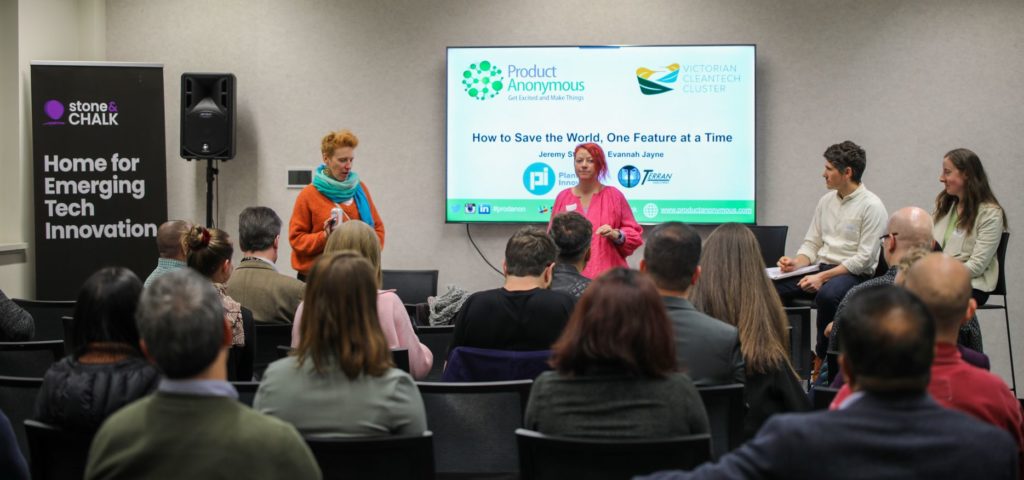With the ever increasing focus on Environmental Social Governance (ESG), organisations are tasked with developing strategies to create long-term and sustainable value. Rarely a simple task in our rapidly changing world, needing to balance a broad range of stakeholders, from employees and customers to investors, suppliers, community groups, and our societal and environmental obligations at large.
In August, we teamed up with the Victorian Cleantech Cluster to hear from Jeremy Stimson (Planet Innovation) and Evannah Jayne (Terran Industries) to explore how to save the planet, one feature at a time.

The Challenge
Extending beyond ‘because it is the right thing to do for our environment and planet’, there are various commercial risks for not taking ESG seriously:
- Growing focus on the Environmental part of ESG policy;
- Supply chain volatility;
- Evolving legislation;
- Investor priorities;
- Attracting talent; and
- Brand association.
But remember, where there are risks, there are also opportunities, where you can use these attributes to differentiate yourself from the rest of the market.

Where to start?
The transition to sustainability can feel overwhelming at first. The task can seem insurmountable. So where should you start?
- Begin with monitoring and tracking your emissions.
There are many software options available for emissions monitoring, data collection, and sustainability reporting. Many can also help in strategic planning and decision-making by analysing historical data to provide insights and predict the future.
- Make it bite size.
Like most things, break down the problem. Begin with small steps to build some momentum. Canvas opinions from others, and find internal partners to gain support, working your way up the chain (ie, don’t go straight to the CEO).
- Work with your timelines.
There can be many challenges in a corporate setting, such as having contracts with existing suppliers. But rather than fight against the system, look for a path of less resistance. When is the contract due to expire? A month before the expiry date, conduct a review for alternative options.
- Keep climbing the ladder.
Change won’t happen overnight. As you start to make some progress, keep going. There is always more than can be done.
You don’t have to work on a climate tech product to make a difference with the environment.
Additional Overlooked Opportunities
There are many opportunities to improve, and move towards a circular economy. Try not to only look at the obvious things. Widen your view and look beyond what is just in front of you.
A few things to consider:
- Data storage: storing information, emails and backups all require servers and the energy to power them. Is it time for that retention policy to be reviewed?
- Reverse logistics: Instead of products ending up in landfill, can they be re-acquired, refurbished, and resold? Not only does this reduce our waste, but it can also generate an additional revenue stream.
- Waste management: Companies spend money to deal with their waste. However, reducing the amount of waste also provides an opportunity to alleviate that cost.

Additional resources
- CSR Accreditation – https://csr-accreditation.co.uk/
- 8 Business Cases for the Circular economy – World Business Council for Sustainable Development
Thank you
Thank you to Jeremy Stimson and Evannah Jayne for sharing with us; and to our event partner, Victorian Cleantech Cluster; and to Green Hat Solutions, Terran Industries and Planet Innovation for supporting the event; and to our volunteers Nosh Darbari, Steve Bauer, Yasha Lim; and to Stone & Chalk for hosting us in their lovely new office.
